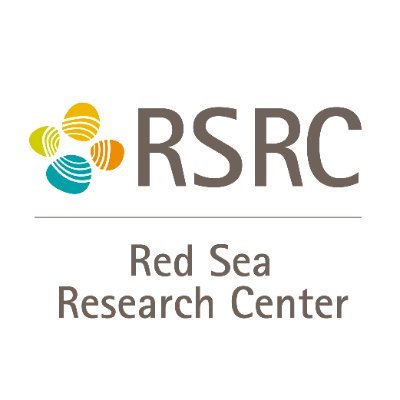
Red Sea Research Center, KAUST
@RSRC_KAUST
Followers
4K
Following
1K
Media
834
Statuses
2K
This account is no longer active. Please follow @KAUST_News for all the latest updates. Thank you for being a part of our community!
KAUST, Thuwal, KSA
Joined June 2017
This account is now closed. Thank you for your support! Please follow @KAUST_News to stay updated on all things KAUST.
0
0
0
Many different dolphin species can be seen here at Red Sea, but the most.prevalent are spinner dolphins (Stenella longirostris), little bottlenose.dolphins (Tursiops aduncus), and Risso’s dolphins (Grampus griseus). photo by @morganbennettsmith. #rsrc_kaust #red_sea #dolphin
4
5
14
Researchers in the RSRC are studying the larvae.of several species, including the clownfish shown here,.to determine how larval movement behaviors influence.connectivity among coral reefs. photo by @morganbennettsmith. #rsrc_kaust #red_sea #clownfish
1
4
16
Cnidarians are soft-bodied aquatic animals which live either.in the form of free-living medusae, e.g., jellyfish, or of a polyp.attached to the seafloor, e.g., anemones. photo by @morganbennettsmith. #rsrc_kaust #red_sea #stonycoral
0
2
18
A mixed solution to boost mangrove resilience . Details at .credit Jenny Booth, illustration by Ivan Gromicho. #rsrc_kaust #kaust_research
0
4
13
Sharks are well-adapted to hunting in dim light.conditions. Their large eyes and advanced olfactory.and electroreceptory senses help them chase.down prey in deeper, darker waters. photo by @morganbennettsmith. #rsrc_kaust #red_sea #shark
0
3
6
The Red Sea is home to five of the seven existing species of sea turtles.including the green turtle (Chelonia mydas), hawksbill (Eretmochelys.imbricata), loggerhead (Caretta caretta), olive-ridley (Lepidochelys.olivacea), and leatherback (Dermochelys coriacea). #rsrc_kaust
0
0
8
Secretive reef fishes use different strategies for.avoiding detection. Some, like Aron’s blennies.(Ecsenius aroni), hide in abandoned worm tubes.and other holes. photo by @morganbennettsmith. #rsrc_kaust #red_sea #blenny #reef
0
1
7
Soft coral polyps have eight feathershaped.tentacles. In this picture, a.zooxanthellate soft coral species of.the family Xeniidae. #rsrc_kaust #red_sea #coral #polyp
0
1
19
In soft.corals like Dendronephthya, the calcium carbonate.skeleton is composed of white elongated sclerites.found in the animal soft tissue and visible through.it. 📸 @morganbennettsmith. #rsrc_kaust #red_sea #Dendronephthya #coral
0
1
6
Coastal habitats in the Red Sea include well-known, shallow-water marine ecosystems like mangrove stands and seagrass meadows, but also a variety of seaweed and algal mats. photo by @morganbennettsmith. #rsrc_kaust #red_sea #coastal #habitats #mangrove #seagrass
0
1
11
Moon jellyfish (Aurelia spp.) are one of.the most recognizable groups of jellyfish. Often kept in aquarium displays, these.species rythmically float through many of.the world’s oceans. photo by @morganbennettsmith. #rsrc_kaust #red_sea #jellyfish
0
2
6
Acropora corals can also form tall, branching.colonies. These are among the most important.structures providing shelter for countless fishes.and other species. photo by @morganbennettsmith. #rsrc_kaust #red_sea #acropora #coral
0
4
16
A juvenile Red Sea clownfish (Amphiprion bicinctus).seeks shelter in the vibrant tentacles of its anemone.host. Clownfish and anemones form a symbiotic.relationship that allows them to thrive on coral reefs. photo by @morganbennettsmith. #rsrc_kaust #red_sea #clownfish #anemone
0
1
11
The reef from above. Aerial views more.clearly show the organization of a reef in.the Red Sea. A shallow, sandy lagoon is.protected within the reef; deeper, blue.water extends off the outside wall. photo by @morganbennettsmith. #rsrc_kaust #red_sea #reef
0
1
11
Many different dolphin species can be seen here, but the most.prevalent are spinner dolphins (Stenella longirostris), little bottlenose.dolphins (Tursiops aduncus), pantropical spotted dolphins (Stenella.attenuata). photo by @morganbennettsmith. #rsrc_kaust #red_sea #dolphin.
0
0
4
Clearing and staining is a lab technique that allows.for the visualization of internal fish anatomy without.specimen destruction. photo by Song He. #rsrc_kaust #red_sea #clearing #staining
1
5
35
RT @KAUST_NewsAR: تركز #كاوست جهودها على تحقيق بيئة مستدامة من خلال استراتيجيتها الجديدة، وذلك عن طريق تقديم أبحاث تعمل على تطوير مصادر غذا….
0
56
0





















